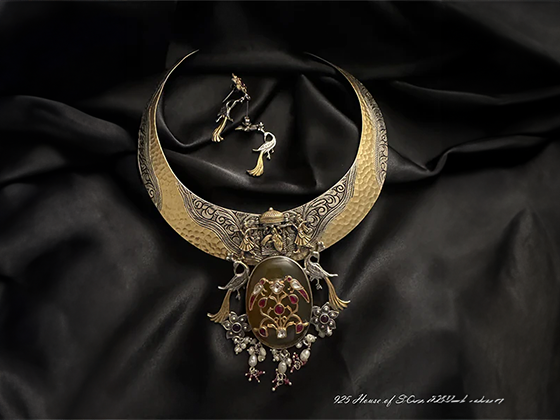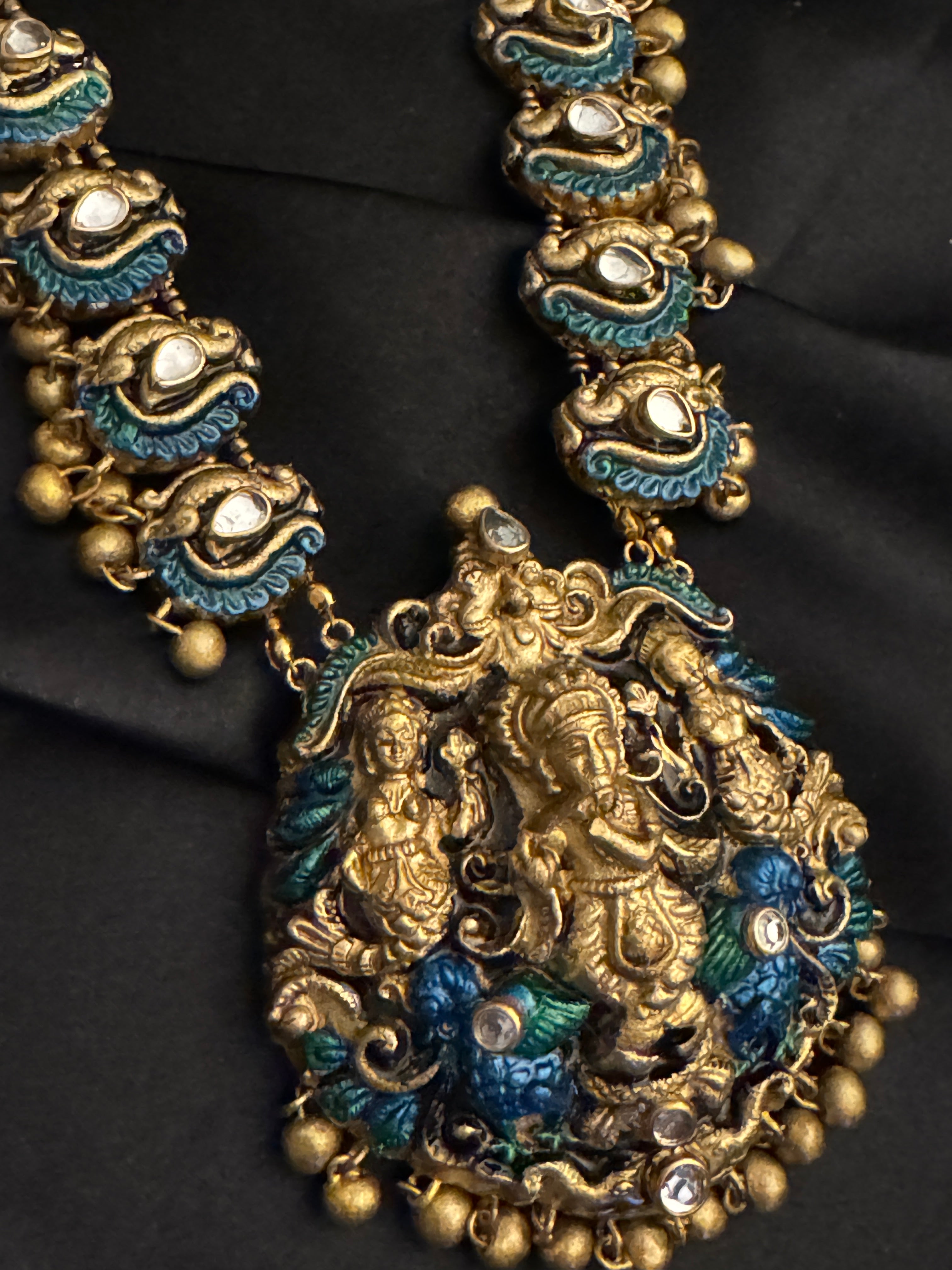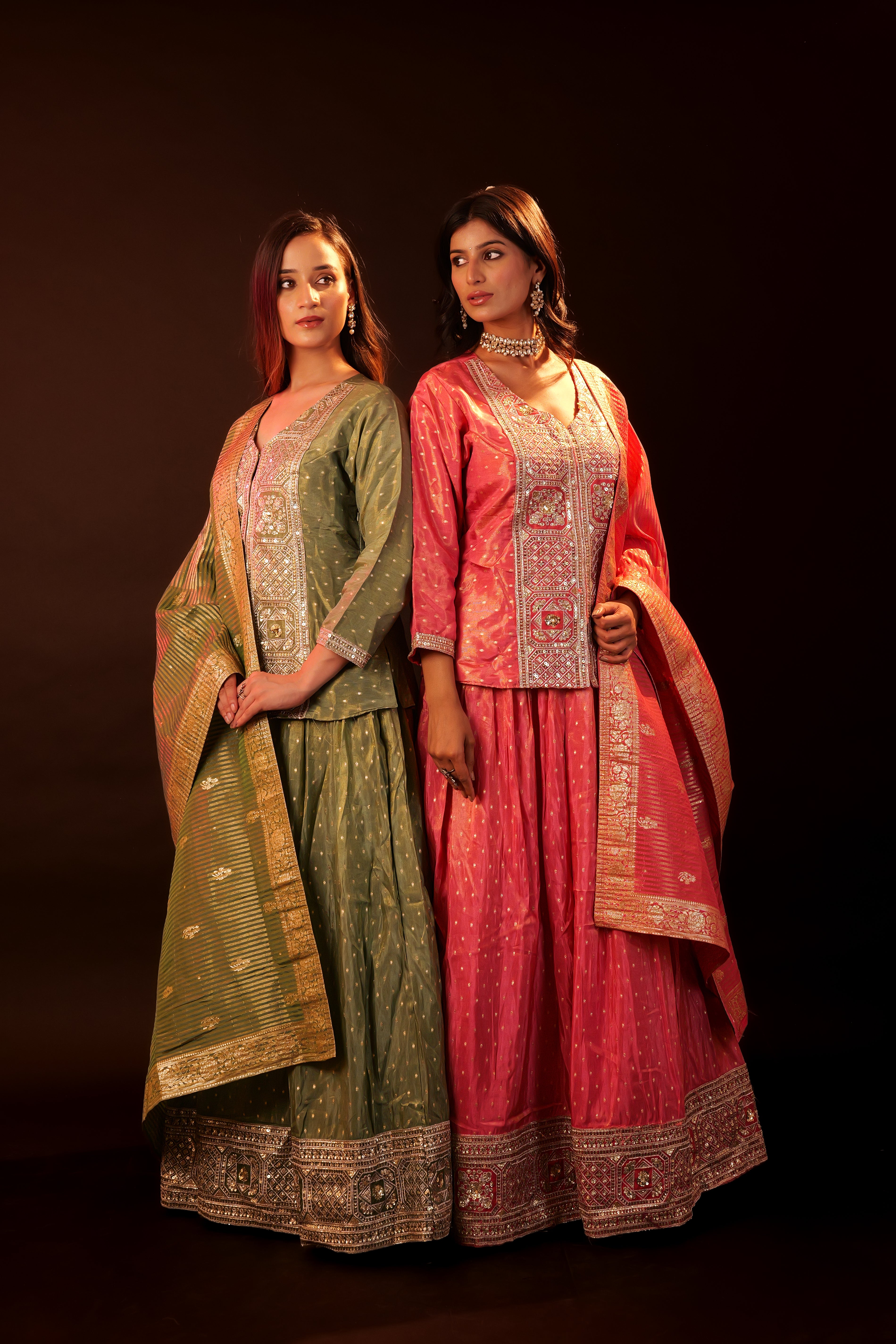Saree marks the culture and traditions of India. Saree gives its bearer a subtle balance of sheer beauty, sophistication, and class. Sarees are the most favoured choice of attire for most Indian women in their daily lives and also for special occasions.
This classic ethnic piece of clothing can be found in every state of India, yet all of them are not the same. Read on to know more about the classical sarees of India from its different states.
DIFFERENT TYPES OF SAREES IN INDIA
1. DHARMAVARAM SAREES FROM ANDHRA PRADESH
Dharmavaram sarees are traditionally woven from tussar silk in the interlock-weft technique. The weavers from the Dharmavaram town in Ananthpuramu in Andhra Pradesh use their hands and legs to weave the saree.
Dharmavaram sarees are popular for their wide solid coloured borders with contrasting heavy pallus intricately woven with brocaded gold patterns and butta designs.
Dharmavaram sarees with simple designs can be worn every day and for grand occasions like weddings, heavy-designed Dharmavaram sarees are very popular among women.
2. MUGA SILK SAREE FROM ASSAM
Muga silk is only produced in Assam and is known for its durability and natural yellowish golden tint. Fetched from Antheraea Assamensis a semi-domesticated multivoltine silkworm, Muga silk is mainly produced by the Garo community of Assam.
Muga saree is one of the costliest silk as its shine increases with every wash, making the saree last for a long time. The classical Muga silk sarees are mainly yellowish golden in colour with geometrically shaped motifs. Pure zari work can also be found on the sarees.
3. PATOLA SAREE FROM GUJARAT
Patola sarees are the pride of Patan, Gujarat. Patola sarees comes with distinctive geometrical shapes and colourful variety. Patola sarees are hand-dyed in natural dyes, making these pure silk sarees expensive. The double ikat weave makes both sides- whether the feel, colour and designs of a patola saree identical. One saree takes almost five to six months to complete because of its tedious making process. The more distinct and intricate a pattern is, the more expensive the Patola saree is.
Traditionally, the patterns are geometrical in shape. However, patola saree with motifs, animal and floral prints, and abstracts are also very popular.
4. BANDHANI SAREES FROM GUJARAT AND RAJASTHAN
Rajasthan and Gujarat gives us the famous tye and dye Bandhani printed saree. They are fit for India’s humid weather as they are lightweight. Pioneered from the weavers of the Khatri community of Gujarat, Bandhani sarees are believed to bring good luck and fortune for a bride.
They are crafted by the special tye and dye method where the saree is tied in knots followed by dying colours in the saree. The knots restrict the colour from spreading, thus, giving a unique design. Then, dotted prints are used all over the saree to enhance the colours.
5. PHULKARI SAREES FROM PUNJAB
Phulkari sarees from Punjab are known to be the most vibrant and distinctive embroidery sarees in the world. The darn stitching method is used to make Phulkari sarees. The stitching is always done on the coarse side of the fabric. Phulkari sarees are very vibrant because of the use of colourful silken threads.
Phulkari sarees are designed with motifs, flowers and sometimes geometrical shapes.
6. KANJEEVARAM SAREE FROM TAMIL NADU
Kanjeevaram saree is known as the queen of sarees. These sarees have a royal texture and an ornate aura. Coming from the Tamil Nadu district Thiruvannamalai, these sarees are designed from pure mulberry silk threads.
The vibrant colours, regal borders, rich silk gives them a luxurious aura making them popular bridal wear. Kanjeevaram sarees have a signature gold tint in them with designs of motifs like peacocks, lions, chariots, moon, leaves etc. to showcase the rich heritage of Tamil Nadu.
7. BANARASI SAREE FROM VARANASI
All the way from Varanasi, Uttar Pradesh, Banarasi sarees are known for their golden or silver zari or brocade work, intricately woven with fine silk. Banarasi sarees were inspired by the Mughal designs and were crafted only for the royalty mainly by Muslim artisans.
The extravagant design and heavy texture of Banarasi sarees make them a popular choice for Indian brides. There are many types of Banarasi saree like Butidar, Cutwork, Jangla, Vaskat, Tanchoi made in silk, georgette and organza.
8. PAITHANI SAREE FROM MAHARASHTRA
The name Paithani is derived from the Paithan region of Maharashtra. These sarees are woven from naturally dyed threads and are available in bright colours. The body of Paithani sarees is designed with ‘butis’ whereas the border and pallu have motifs like Haans, Lotus, mangoes and peacocks.
These luxurious Paithani sarees are made with unmatched excellence, with exclusive designs specially made for weddings and grand festivals.
9. TANT SAREE FROM WEST BENGAL
Tant saree is a staple in every Bengali women’s wardrobe. They are woven from cotton threads, hence are transparent and lightweight.
The border and pallu of Tant saree are decorated with numerous motifs making them a popular option for wearing on any Pujas. These stiffly starched and deftly crafted Tant sarees are enhanced with hand painted, printed and embroidered patterns. The patterns woven are mainly of modern art and floral elements.
10. KASAVU / BALARAMPURI SAREES FROM KERALA
The classic white or off-white saree of Kerala is worn on every important occasion like the famous Onam festivities and other religious ceremonies.
Originally, Kasavu was a dhoti, blouse and stole which is modernised into a saree. The classic white or off-white background is accompanied by a thick and shiny golden border, sometimes the border is even laced with pure gold.
The traditional Kasavu saree is woven with 100 percent unbleached cotton but over time both silk and cotton are used to weave these sarees.
Image source: Google and Pinterest












